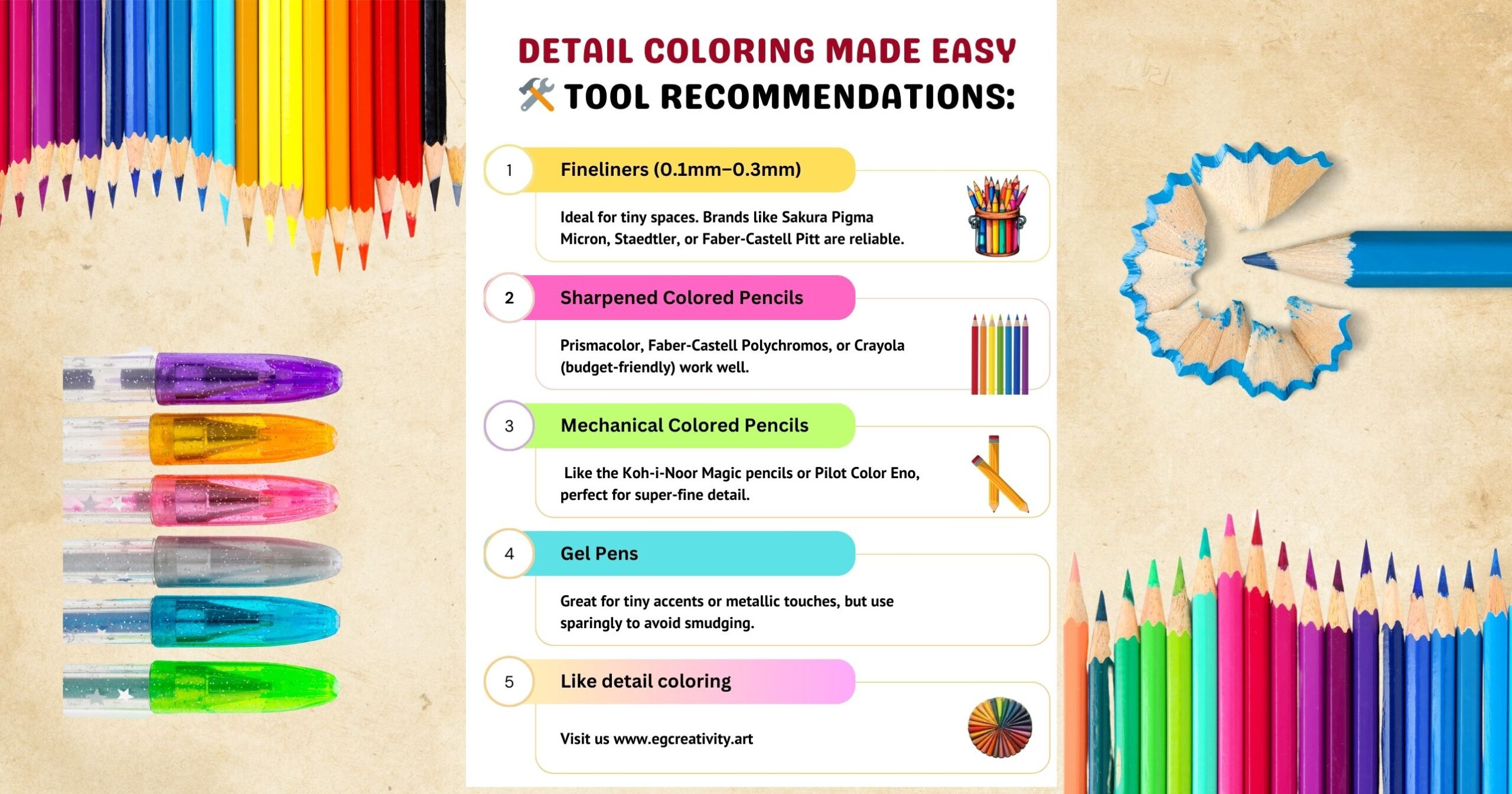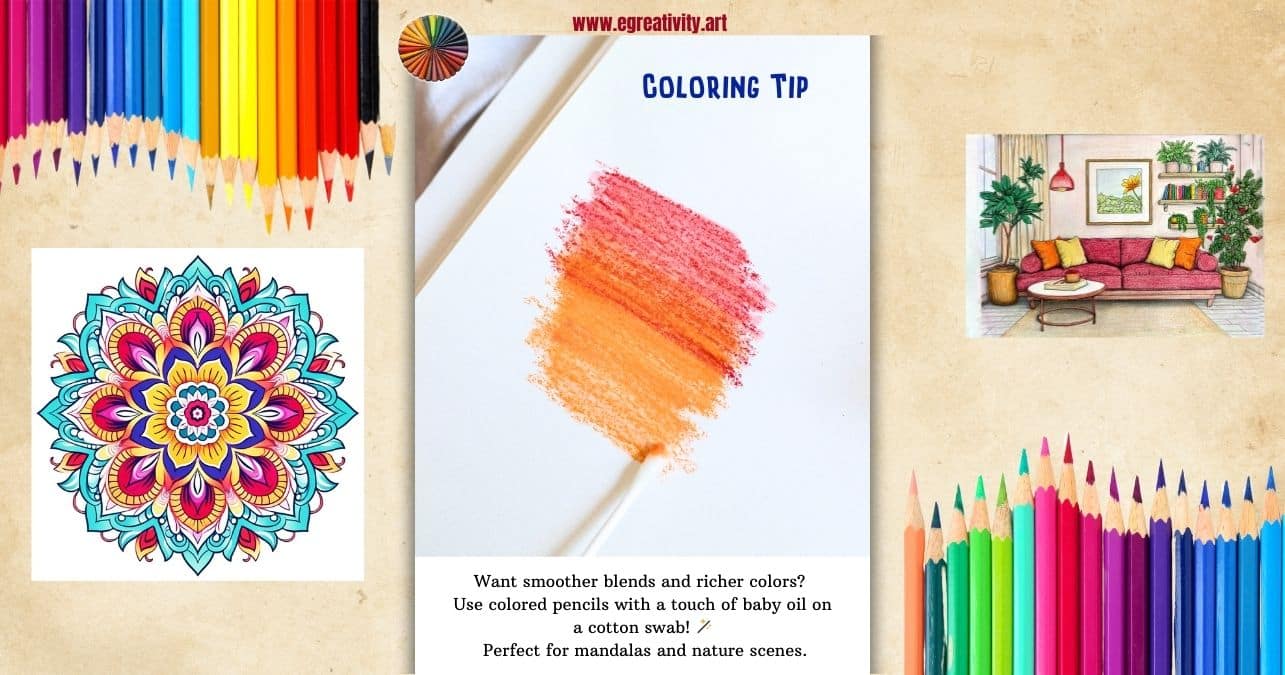Coloring Book Techniques to Boost Your Creativity
Coloring isn’t just for kids—it’s a creative, relaxing, and even meditative practice enjoyed by artists and adults worldwide. The practice of adult coloring has a rich history, dating back to the early 20th century when Carl Jung, a renowned psychiatrist, prescribed coloring to his patients as a form of relaxation and self-expression. Whether you’re just starting or looking to refine your skills, these coloring book techniques will help you color with confidence and bring your pages to life.
In this guide, you’ll discover simple yet powerful methods using a variety of tools, including colored pencils, markers, crayons, and more. These techniques are designed to be beginner-friendly and can be mastered by anyone, regardless of their artistic background or experience. Let’s dive into some coloring techniques for adults that you can confidently apply to your coloring books.
Coloring Tips
- Coloring Tips


Want smoother blends and richer colors? Use colored pencils with a touch of baby oil on a cotton swab! 🪄Perfect...
✏️ 1. Blending Techniques for Smooth Transitions
One of the most popular pencil shading techniques, blending not only allows you to create soft, seamless color transitions but also provides a therapeutic experience. Using light pressure, layer two or more colors where they meet, then gently blend them with a blending pencil, white pencil, or tissue.
🖌️ Tip: Try this technique on floral or mandala coloring pages to create a soft, radiant look that radiates from the center outward.
🖍️ 2. Layering Colors for Depth and Texture
Layering is a versatile technique that involves building up color gradually. Start with a light base layer and add depth with darker shades on top. This method adds richness and texture, especially when using colored pencils or wax-based crayons. It’s perfect for adult coloring book pages and can be used to bring life to hair, fur, or natural elements like leaves and petals.
Perfect for adult coloring book pages, layering is ideal for hair, fur, or natural elements like leaves and petals.
🖊️ 3. Marker Techniques: Blending and Bleeding
Markers offer bold color, and with a bit of skill, you can create stunning effects. To blend markers, work while the ink is still wet and use a lighter shade or a colorless blender to create gradients. Don’t be afraid to avoid harsh lines by coloring in small circular motions or in one direction. These marker blending tips are efficient on smooth paper and can add a daring touch to your coloring pages.
Avoid harsh lines by coloring in small circular motions or one direction. These marker blending tips are efficient on smooth paper.
🪶 4. Creating Texture with Hatching and Stippling
Add interest and variation to your pages with hatching (parallel lines) or stippling (dots). These techniques mimic shading and depth without using additional colors.
Great for fantasy creatures, stone textures, or backgrounds in adult coloring books.
🧰 Recommended Tools & Coloring Methods
To get the most from these coloring book techniques, start with the right tools:
Colored pencils (soft-core for blending)
Alcohol or water-based markers
Gel pens for fine details
Crayons for rich texture
Blending tools: tissues, stumps, blenders
Each tool unlocks a new way to express your creativity. Whether you’re working on a detailed animal illustration or a simple floral design, the proper technique makes a huge difference.
🌟 Final Tip: Practice with Purpose
Don’t stress about perfection. Every page is a chance to explore your creativity. The more you experiment, the more confident you’ll become in using coloring techniques for adults that suit your style.
👉 Ready to practice? Grab some free printable coloring pages or shop our curated coloring book collection to get started.